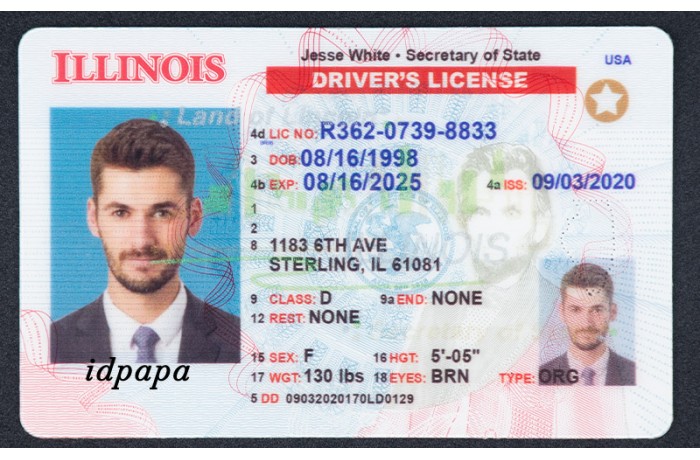Decoding the System: Building copyright ID Scans
Decoding the System: Building copyright ID Scans
Blog Article

Gaining access to exclusive establishments often requires a seemingly simple piece of plastic: a valid copyright. But what if you don't have one? For some, the lure of bypassing age restrictions or assuming false identities can be irresistible. This leads to a dangerous black market where copyright IDs are crafted with increasing skill.
These fake documents are no longer just crudely tampered copies. With advancements in technology, making a copyright readable is becoming a reality.
The process involves intricate features that mimic the layout of genuine IDs. High-tech scanners are used to analyze real IDs, and this information is then employed into the design of copyright.
- Specialized software are used to generate realistic holograms, barcodes, and magnetic strips.
- Advanced imaging techniques ensure that the ID looks authentic under scrutiny.
- Protective elements are often replicated with surprising fidelity.
While these advances make it increasingly difficult to detect copyright, law enforcement agencies are continually improving their techniques. The fight against counterfeiting is a constant struggle, with both sides pushing the boundaries of technology.
It's important to remember that possessing or using click here a copyright is a illegal activity with significant penalties. The allure of bypassing restrictions shouldn't outweigh the risks involved.
The Anatomy of a copyright ID
copyright identification documents have become increasingly sophisticated, making it challenging for scanners to identify them. These fraudulent IDs often imitate the protective measures of genuine documents, leveraging high-quality printing methods. They may even include 3D images that seem real to the casual glance.
To bypass scanners, counterfeiters often incorporate RFID chips that contain manipulated information. They may also modify the chemical composition of the paper used to manufacture the ID, making it challenging for scanners to interpret the data.
- Moreover, some copyright IDs use special inks that are only visible under specific light sources.
- Fraudsters also constantly adapt their techniques to remain one step ahead security measures.
DIY copyright: Can You Really Make it Scannable at Home?
So you wanna craft/forge/build yourself a copyright, huh? Thinkin' you can whip/hack/engineer up somethin' that'll actually pass/fool/trick those scanners at the club. Look, it ain't impossible to design/make/fabricate a copyright at home, but let's be real here - makin' it scannable/readable/detectable by security systems/software/checks? That's where things get tricky/complicated/challenging.
- You're dealing/battling/up against some seriously high-tech hardware/equipment/gadgets these days, kid.
- Security features/codes/measures are gettin' more sophisticated/advanced/complex by the day.
- Even if you manage to replicate/copy/duplicate the basic design/layout/structure, the tiny details/nuances/variations can throw it off.
Bottom line: don't get your hopes up about makin' a foolproof replica/copyright/fake with just a printer/scanner/computer. It ain't worth the risk, trust me. Stick/Hold/Stay to legal ID options, or you might end up in a sticky/messy/unpleasant situation.
Inside the Tech: How Scannable copyright Fool the System
These days, forging an ID isn't just about a clumsy Image Editor job anymore. The rise of scannable copyright is a whole new ball game. Masterminds are leveraging cutting-edge technology to create phony documents that sometimes pass even the most sophisticated scanners. Think high-resolution images, embedded RFID tags, and even UV inks designed to mimic the genuine deal.
- Security systems, once thought foolproof, are now facing this onslaught of technological sophistication.
- The consequences are high. These scannable IDs fuel a host of illegal activities, from identity theft to underage drinking and even drug trafficking.
It's a constant battle between security measures and those seeking to exploit them. The question remains: will technology eventually catch up the ingenuity of copyright creators?
The Science Behind the Scam : Deciphering Scannable copyright Technology
The realm of fake identification technology is constantly evolving, with sophisticated methods emerging to thwart security measures. One remarkably troubling trend involves the creation of scannable copyright that can easily fool even the most stringent scanners. These ill-gotten documents often employ cutting-edge printing techniques and materials that mimic the genuineness of real IDs, making them regularly difficult to identify.
- Understanding the technical underpinnings of these copyright is crucial for developing effective countermeasures.
- This analysis will probe into the elements used, the production processes involved, and the sophistication of the layouts.
- Concisely, this knowledge will empower authorities to mitigate the growing threat of scannable copyright and protect against their detrimental consequences.
Exposing the Deception: A Look at Scannable copyright Production
The world of copyright IDs is constantly evolving, with sophisticated techniques used to produce documents that can effortlessly pass scanning. Con artists are increasingly relying on cutting-edge methods to forge IDs that are nearly unidentifiable to the naked eye.
Security measures are constantly being refined to combat this alarming threat, but the battle between legitimate identification and copyright documents is an ongoing race.
- Perpetrators often take advantage of vulnerabilities in security protocols to manufacture copyright that are complex to uncover.
- Advanced imaging are commonly used in the production of scannable copyright, facilitating criminals to generate documents that are extremely similar to real ones.
- Regulatory bodies are working tirelessly to combat the problem of scannable copyright through enhanced security measures, educational initiatives, and harsher consequences for those involved in their creation.